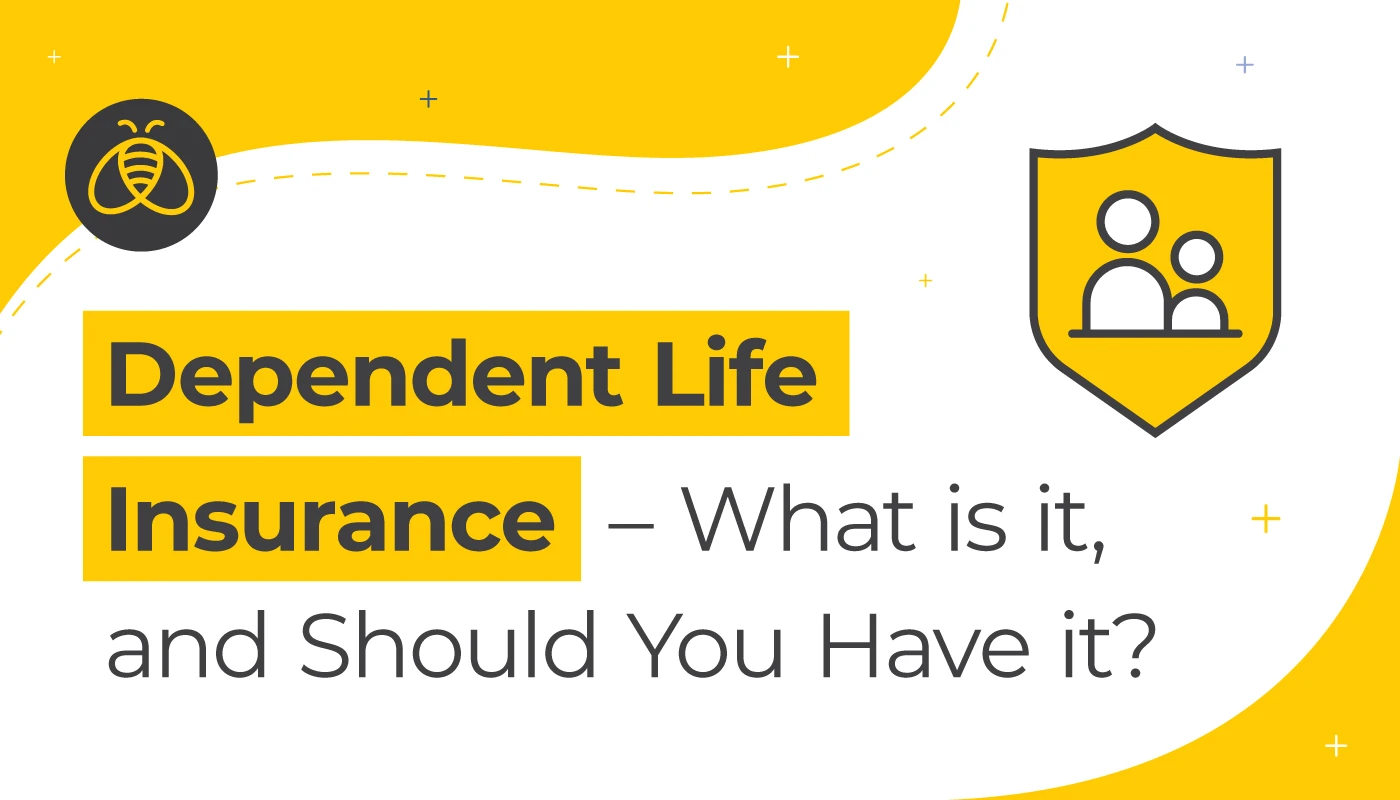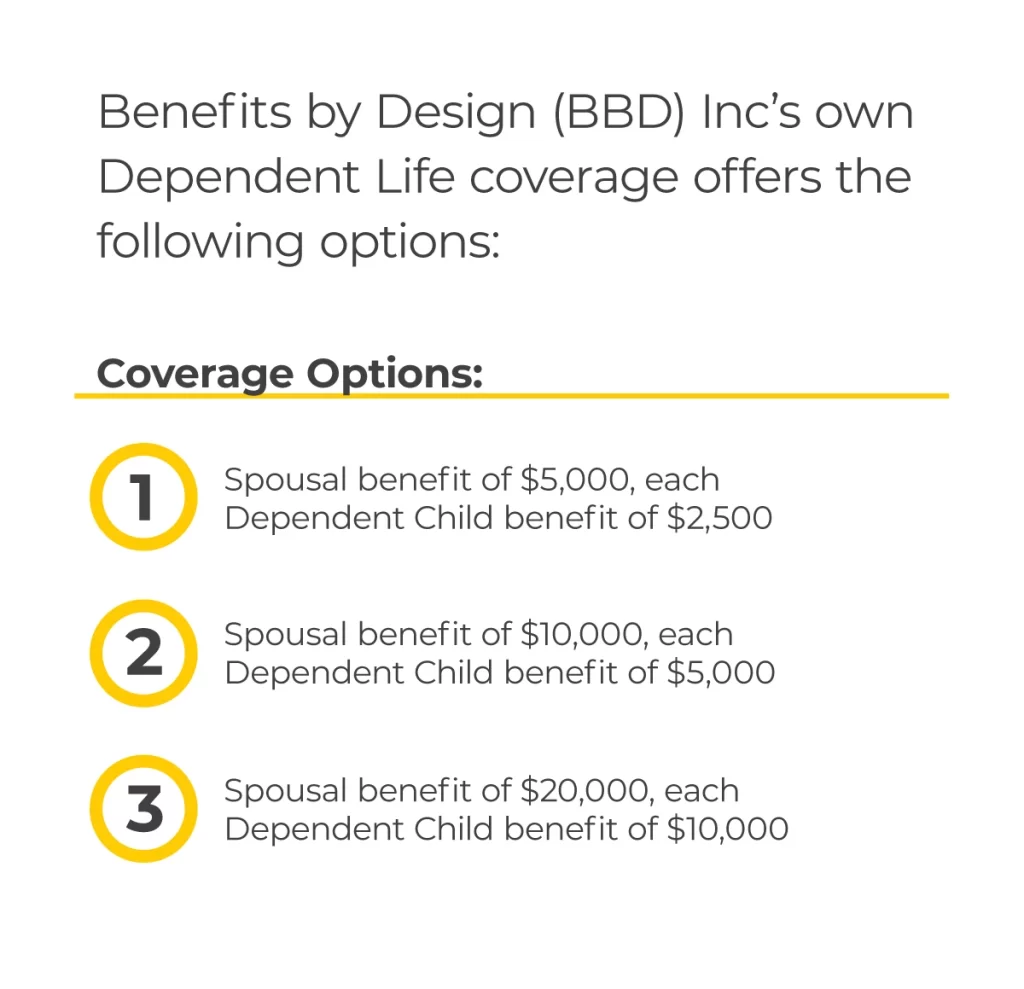Dependent Life Insurance – What is it, and Should You Have it?
By: Benefits by Design | Tuesday July 26, 2022
Updated : Thursday August 11, 2022
Group Dependent Life Insurance is an often-underrated benefit. But as employees who are covered for the benefit ourselves, the value of having peace of mind goes beyond the monetary assistance it could provide.
While 90% of employers offer group life insurance through their employee benefits plans, only 55% of employers offer dependent life coverage. We found this slightly surprising, given the low price tag attached to the coverage, and the specific, measurable benefit it provides to employees.
What is Dependent Life Insurance?
Dependent Life Insurance is an employee sponsored benefit that provides a lump sum of money to an employee in the event of the death of one of their dependents. The employer can choose how much they would like the benefit amount to be, and coverage is usually provided in conjunction with Life Insurance. As with Group Life Insurance, protection is generally provided 24 hours a day, anywhere in the world.
Who qualifies for Dependent Life Insurance Coverage?
As the name implies, only dependents are eligible for coverage under this type of benefit. Dependents include a spouse (both by marriage and common-law) as well as children under a specified age – under 19, or under 21 are common ages. Overage dependents as well as disabled dependents who qualify for health and dental, also qualify for Dependent Life coverage.
Who is the Beneficiary?
Under Dependent Life Insurance, the beneficiary is always the employee. This is because the benefit is set-up as monetary protection for employees should the worst occur. The intent is for employers to support their employees. Thus, allowing them to appoint a different beneficiary could defeat the purpose of the coverage.
Value-Added Options
Premium Waiver
Depending on the other group benefits offered by the employer, some plans will provide a waiver of premium option. This means that if a totally disabled employee has been approved for a waiver of premium under the Life Insurance benefit, the premium for their Dependent Life Insurance benefit will also be waived.
Pre-Natal Benefit
Some insurance plans have built-in extras. For example, the Pre-natal Benefit provides plan members with a benefit amount following a stillbirth. The amount is usually the lesser of the actual amount for the funeral expense or the amount of the Dependent Life Insurance for which a child is covered.
Check with your provider to see if there are any value-adds in your plan. If your benefits are administered by us, you can check for other enhancements as well.

Benefits by Design’s Embedded Enhancements & Value-Added Benefits
Tax Implications for Dependent Life Insurance
For the Employee (Beneficiary)
If the employer is paying for the premiums, those would be considered taxable income for the employee, regardless of whether or not the benefit is needed.
The dependent life insurance benefit is provided tax-free. Therefore, it should not be added as taxable income when doing a tax return for the beneficiary (employee).
For the Employer
Likewise, the premiums paid by the employer for the coverage is a tax-deductible business expense. The cost of Dependent Life Insurance through a group benefits plan is usually quite nominal. Costs range from just under a dollar, to just over two dollars.
Should You Offer Dependent Life Insurance?
When people think about Life Insurance, they are usually considering their own death. They want to safeguard the family they might leave behind. But what happens if they are the ones left behind? How does Dependent Life Insurance help? With 56% of Canadians having no plans to purchase additional coverage outside of what is offered by their employer, they could face more than just a broken heart.
Perhaps the lower uptake of this benefit can be attributed to the simple fact of the easily measured cost savings (if small) it can provide. Employers looking to save money may find it easy to dismiss the benefits of this coverage.
However, we think that including this coverage shows how much you care about your employee’s emotional wellbeing. It’s certainly nice to know that there will be one less thing to worry about should the worst occur.


